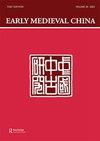Lore and Verse: Poems on History in Early Medieval China
IF 0.3
4区 社会学
0 ASIAN STUDIES
引用次数: 0
Abstract
without a critical discussion of primary sources. There is, unfortunately, a remarkable lack of editorial work throughout the book. When a text is quoted more than once, the translation is often inconsistent, sometimes at crucial points. The decision to italicize terms in pinyin romanization seems rather random and causes confusion in many places. For instance, on p. 105, the book title Han shu is not italicized, whereas in the next sentence Hou Han shu is. Careless errors abound, damaging the scholarly credibility of the book. Just to cite a few examples: Ehuang娥皇 and Nüying女英 are described as “the daughters of Shun舜 and also the wives of Yao堯” (p. 63); the journal Early Medieval China, in which the author’s own article is published, is given as “Journal of EarlyMedieval Chinese” in the Bibliography (p. 150); the writer Xiahou Zhan’s夏侯湛 surname is spelled as Xiaohou twice (p. 59). This book is a reminder that much remains to be done about literary representations of objects, ideas, and cultures that were deemed “foreign” in early medieval China. One question is why such writings reached great popularity in the third century, when the Han and Roman empires on both ends of the Silk Roads were in fragmentation or decline. Contrary to the common assumption that diplomatic activities along the Silk Road were in hiatus after the fall of Tang, Xin Wen’s The King’s Road: Diplomacy and the Remaking of the Silk Road (Princeton University Press, 2023) argues that the fragmentation of empire incentivized, rather than prevented, diplomatic activities. Does this theory apply to the third century? Was there an increased need for competing courts and regimes to glorify and amplify the symbolic meaning of foreign tributes as claim for legitimacy? Kong observes in thirdcentury writings on exotica a general tendency to downplay the foreign roots of the objects to integrate them into Chinese culture. If it is true, how did these efforts of “Sinicization” reflect the writers’ attitudes toward foreign kingdoms and foreign peoples? Are there more nuanced views of objects from different regions and with different cultural and religious associations than those vaguely citing the importance of “truth, beauty, and goodness”? Kong’s book offers a starting point for more thorough and in-depth investigations.爱与诗:中国中世纪早期历史诗歌
本文章由计算机程序翻译,如有差异,请以英文原文为准。
求助全文
约1分钟内获得全文
求助全文

 求助内容:
求助内容: 应助结果提醒方式:
应助结果提醒方式:


